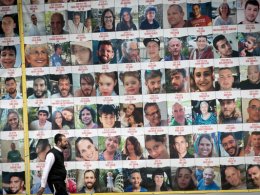Evolution of the Hijab Movement: Iran’s Next Revolution?
More than two months after economic pressures ignited mass protests against Iran’s government, the last hope of a grassroots movement against the regime remains with a spark lit by Iran’s women and their courage to remove mandatory hijab, the Islamic head covering.
Over 35 women have been detained in just capital-city Tehran since December 2017 for breaching compulsory veiling laws, with at least two women facing trial under the new draconian law, according to leading rights group Amnesty International.
Many of the female protestors braved near-certain arrest by removing their headscarves in public while standing on utility boxes and other public platforms and sharing photos and videos of themselves on social media.
In a statement last week, Iranian regime police revealed that woman protesting will be charged with “inciting prostitution and corruption” which will be punished by as much as a decade in prison.
While in custody, the women have reported being tortured, subjected to solitary confinement and in some instances, said they were allegedly injected with an unidentified substance, according to their attorneys.
In February, Iranian police pushed an anti-hijab protestor, Maryam Shariatmadari, off a concrete block causing her to sustain reported injuries. She is currently being held in Shahr-e Rey prison and has not received medical attention, according to those familiar with her case.
This, despite an announcement by Tehran’s police chief in December, that women would no longer face arrest for not wearing hijab.
“The regime is trying to find ways to prevent this from spreading,” Iranian human rights activist and political analyst Faryar Nikbakht told The Foreign Desk, adding that the arrests and heavy bails are hardly a deterrent as the movement gains popularity.
“Now they are doing it in groups. I am sure that in the next big demonstration, thousands of Iranian women will take off their mandatory head covering,” according to Nikbakht who pointed out the evolving nature of the movement from the individual to crowds of women removing their hijabs.
Cases of women taking off their hijabs have been reported in parks, on the trains and most popularly, on utility boxes in crowded public areas.
“The fear is fading and one of these days, women will be taking off their head scarves in the thousands during a large demonstration where they will feel more protected,” Nikbakht said.
That day, in fact, could be coming up this week as women around the world commemorate International Women’s Day March 8.
Yet, others are skeptical about the breadth and longevity of the hijab movement in relation to or as a harbinger for Iran’s larger anti-regime opposition.
Removing the hijab, while defiant against the regime, lacks the two fundamental ingredients for a full-fledged political movement: Leadership and awareness, Iran-based political historian, Dr. Mehrdad D., who requested not to use his full name, said in an interview with The Foreign Desk.
“There is no recognized leader in the hijab protests, and as a result, it will only be seen as a series of demonstrations rather than a large-scale movement,” Dr. Mehrdad said.
“A segment of the population of women in Iran see the removal of hijab as a lack of modesty rather than a political statement,” Dr. Mehrdad said. “They judge the other women who take off the headscarf as committing a moral crime, not a political one,” he said, pointing out that while the anti-government protests were widespread across the country, the hijab movement has not gained similar popularity in smaller towns and cities.
Paradoxically, in places like Tehran where most of the hijab-removal episodes have occurred, many men have shown public support for the women.
Friday, U.S. State Department spokesperson Heather Nauert said that the United States “supports the Iranian people who are protesting against women being forced to wear the hijab."
The movement is continuing to make headlines around the globe with many leaders standing in solidarity with Iranian women.
Last week, 45 European members of Parliament sent an open letter to European Union foreign policy chief Federica Mogherini in a push to call on Iran’s leaders to release the women in custody for protesting mandatory hijab laws.
Mogherini represented the EU during the P5+1 Iran nuclear deal negotiations between Iran and the United Nations Security Council members, including China, France, Russia, the United Kingdom and the United States.
In December, a campaign using a hashtag “White Wednesdays” and showing a video of a woman waving a white hijab with her hair loose, resulted in the arrest and subsequent disappearance of one woman, whose fate sparked interest from media and rights groups across the world.
Vida Movahed, a 31-year-old mother of a young child, was arrested December 27 by Iranian authorities after a video of her waving a white hijab on the streets of Tehran went viral ahead of larger protests in the country in the days that followed.
After international condemnation, Movahed was released in late January.
The ongoing anti-hijab protests also coincided with several days of unrest across Iran in December as protestors who were initially angered by Iranian economic policies, quickly moved to express outrage against the theocratic regime in Iran and its policies of funding terror groups abroad over the plight of its own citizens.
Thousands of protesters were arrested and several perished while in detention; deaths the Iranian regime labelled “suicides” but were widely questioned.
Compulsory headscarves have been required in Iran since the 1979 Islamic revolution, with punishments of fines, lashings and even imprisonment for women who do not cover their hair.









